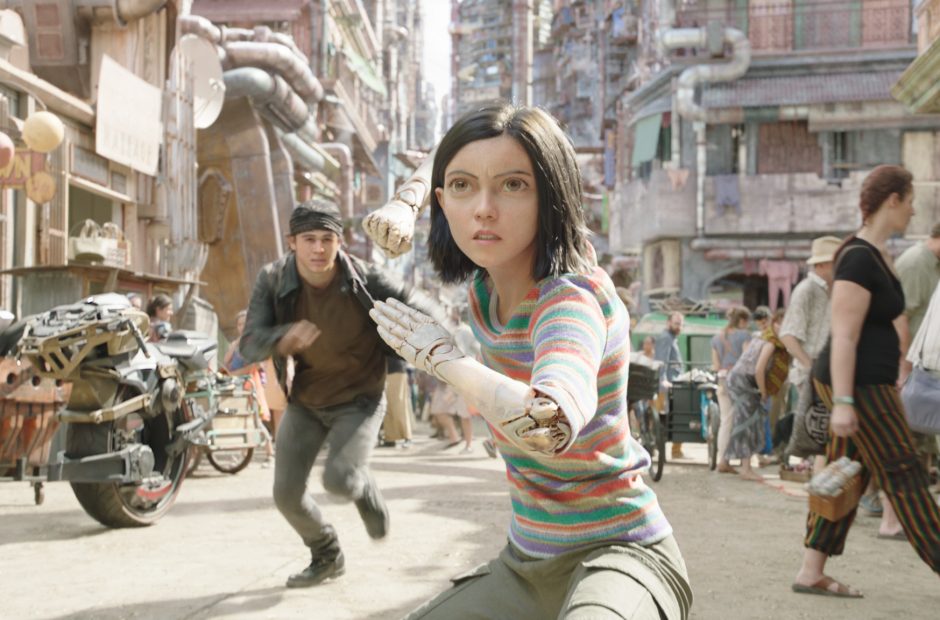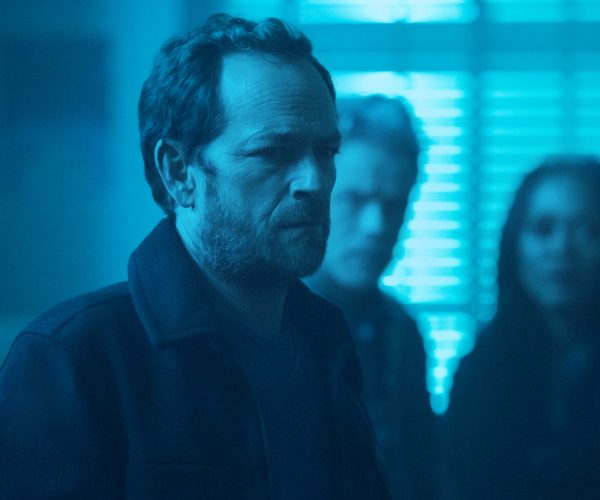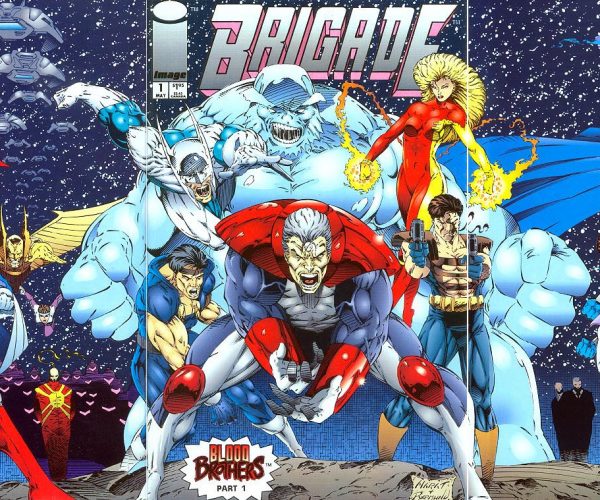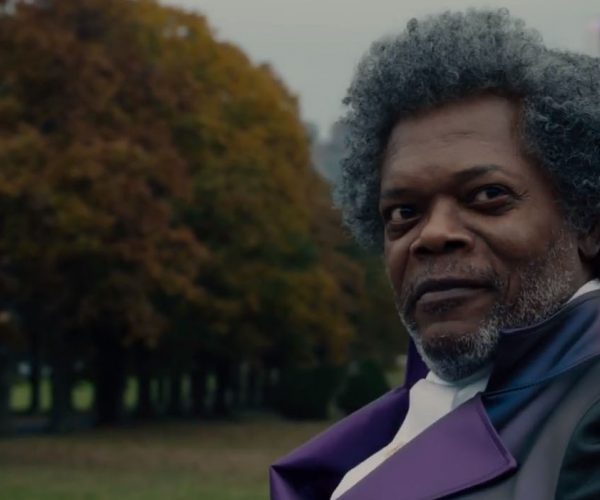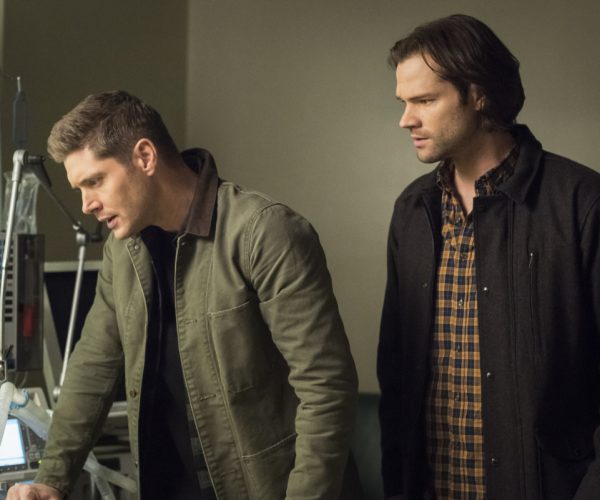If you’d told me when I was watching Battle Angel Alita on the Sci-Fi channel’s Saturday-morning anime block that it would one day be a great-looking American movie, I would’ve asked you why you were in my house talking to a 12-year-old. I would have also thought you were lying. But it’s 2019, and everything is weird now, so we have Alita: Battle Angel, the James Cameron-produced and Robert Rodriguez-directed adaptation of the Japanese manga Gunnm and the anime Battle Angel.
Alita is the story of a cyberpunk future far beyond even what Blade Runner dared imagine. A world where the divide between the haves and have-nots is a matter of miles of sky, quite literally. The “haves” live in the floating city of Zalem, disconnected entirely from the world below. The “have-nots” live below in Iron City, an ultra-industrialized superslum that exists to support a huge floating city above it, sending supplies up through heavily-protected chutes and acting as a dumping ground for the utopia’s leftovers. Upward mobility, both literally and figuratively, is exceedingly rare.
In Iron City, life is brutal, and cybernetic bodyparts are a fact of life. It’s not uncommon to see someone with a mechanical leg or arm or, rarely, a full-body replacement. When people aren’t scrabbling to survive, they’re entertained by Motorball, a popular sport that’s as lethal as it is fast at high levels. Peace is maintained by Hunter Warriors who sign up to take on bounties.
The movie introduces to Dr. Ido (Christoph Waltz), a cyberdoctor who digs through the trash from the floating city above looking for parts he might be able to help his many patients. As we meet him, he finds a human core, intact. A human with the necessary parts to be plugged into a cyberbody. This is Alita – a young-looking girl discarded from the city above. As she awakens, she has no memory of her past life, and almost no knowledge about the world around her. There’s more to her than either she or Dr. Ido knows, and her re-activation and rebirth set off a series of events that could change the power structure of Iron City.
The plot in Alita itself is almost as interesting as the decades-long story behind its production. Producer James Cameron (Titanic, Avatar) has been trying to get this movie made since at least 2003 and was saying back in 2004 that the movie would be ina 3-D and feature a fully CG main character. Cameron wrote and re-wrote the script for years while working on other films – notably Avatar. In recent years, the Avatar films have become his primary focus, what with it being the most successful film of all time, and so he pulled in Sin City director Robert Rodriguez to finally bring the project to life. This project is old enough to be taking driving lessons.
That puts it in an interesting place. It’s an adaptation of a mostly-unknown property that has been incubating for 15 years, brought to life by some of Hollywood’s most experimental VFX directors. It’s a story about a young woman who happens to be a fully CG character in a cyberpunk world.
I had fun watching Alita: Battle Angel, but the movie is rife with exactly the kinds of problems I’d expect from a CG-heavy, anime adaptation that’s been in development for 15 years.
At the core of the movie is Alita herself, played by Rosa Salazar. She’s easily my favorite part of the movie, and absolutely the reason to watch it. Cameron and Co. clearly have franchise ambitions for the property, and Alita is exactly why I’d go back for a second round. She works as an interesting character with believable motivations on her own, and she’s compelling enough to power even through some questionable writing.
Alita almost stumbles early on. As a young woman with no previous memories, the movie has her flirting dangerously with the Born Sexy Yesterday trope. We spend a lot of time with her looking around at the world, wide-eyed in fascination with its small pleasures. Of course, she falls for the first attractive guy she meets, who has soulful eyes and a shady second life. The filmmakers call out a moment in which Alita bites into chocolate for the first time as both a big character moment and a big technical hurdle for the team behind the visuals. While that relationship progresses throughout the movie, the way the Alita character was written gave me the feeling that she was more interested in her personal journey than in the hunky sadboy. That even though some of the actions she took were ostensibly for his sake, that she would’ve done them even if he hadn’t been in the movie.
A big suspicion of mine going into Alita was around the fact that the character is entirely CG. While movies have done a great job mixing live-action environments and animation before, they’re rare. Infinity War‘s Thanos showed us that it can be done right, while Justice League‘s Steppenwolf showed us how easily the venture can still stumble even now. Alita: Battle Angel can’t succeed just on Alita herself working, but it absolutely could fail if she doesn’t.
I immediately “bought” her on-screen. I went in prepared to find Alita jarringly uncanny, and I didn’t. She was there. When she interacted with Dr. Ido and later when Chiren (Jennifer Connelly) grabbed her arm, it felt real. A lot of that comes down to the way director Robert Rodriguez filmed the movie. In much the same way that many video games (Naughty Dog’s Uncharted and The Last of Us being two well-documented examples) use performance-capture techniques to capture lifelike motion, so does Alita. When Ido is interacting with Alita, it’s because Christoph Waltz interacted with Rosa Salazar on-set and the two were able to play off each others’ performances. Salazar spent the entire time filming the movie in a motion-capture getup, which is essentially spandex covered in reflective beads, but she worked primarily (if not entirely) on fully built-out sets and locations – not against a green screen. I explain all this because it plays a crucial role in just how believable she is on-screen and what a big difference it makes for those character-to-character contact moments.
That Alita is such a believable, likable character is especially important when we get to the action scenes – of which there are a whole ton.
Alita herself has a seemingly preternatural ability to dive into fights that are way too big for her, only to come out kicking and punching on the other side. That means we get these awesome David-and-Goliath type fights that feel both high-stakes and gracefully acrobatic. And because these characters are all made primarily out of metal, some of these fights are seriously brutal, and Alita has what would look like a death drive in any other character. But she’s so earnest and naive as she tries to do the right thing (or the wrong thing for the right reasons) that I couldn’t help but cheer for her. Every time I watched her fight, I was enraptured, and I walked out of the movie thinking I’d like to see a few more fights and a bit less acting.
That’s because the live-action performances are really uneven.
My favorite characters were Alita and Chiren. We’ve gone into what makes Alita so fun to watch. Chiren, played by Jennifer Connelly, is a former resident of the world above. Like Ido, she’s a skilled cyberdoctor. Unlike Ido, she entertains fantasies of going back to Zalem and resuming her old life. The actual writing of the character is pretty light, but Connelly made me want to know more about her. Chiren seems fueled as much by a deep regret as she did pure tenacity, and that makes it easy to excuse some of the bad things she does, and it makes it all the more satisfying when she fights her selfish urges to make some good, selfless decisions.
The other character I really enjoyed was Zapan, played by Ed Skrein. The character comes across a lot like his character from the first Deadpool movie, but amped up.
I had a harder time enjoying other characters. Christoph Waltz is a top-tier actor, but Dyson Ido is not a top-tier character. A lot of the characters in the movie felt under-used or incorrectly used, but with Ido I got the sense that Waltz didn’t want to be there, or that he felt silly playing the character. Mahershala Ali’s Vector was fun to watch, but I give a huge amount of the credit for that to Ali himself. Ali just knows how to play a great villain, as he proved beyond doubt in Luke Cage. The character he’s playing doesn’t get enough time to flourish and develop, though. The same goes for Jackie Earle Haley’s Grewiskha, who seems to develop a mortal hatred for Alita purely because someone tells him to. And again, Jackie Earle Haley is just fun to watch. The movie has this stack of great actors, and that comes through in their performances, but their characters are mostly just sketches, and that ultimately hurts the bigger picture.
One of the biggest flaws in Alita comes from the love interest, Hugo. While I enjoy so much of the cast, actor Keean Johnson can’t keep up. The romance between Hugo and Alita feels forced, and it feels like even Alita doesn’t believe it at times, as in one scene where she makes a big speech to him and then calls out herself how over-the-top the speech was. It almost felt like the scriptwriter was trying to tell me as the viewer that this is the path they were locked into and that someone was going to write it anyway – so at least they made it funny.
The worst part of that is that Hugo’s tragic tale plays into some of the biggest scenes in the movie. I don’t want to go into spoilers – even though much of what happens is a remake of the 1993 anime mini-series. Much of the climax of the movie takes Alita and Hugo on a path toward Zalem, and while Alita’s cybernetic body and warrior training make her well-suited to making the journey, Hugo is anything but, and it puts her in a place both of personal power and interpersonal helplessness. This moment worked for me because I was excited about Alita following her destiny, which was going to take her toward Zalem anyway, but it should’ve been a devastating one. Instead, Hugo’s struggle felt muted to me.
The end result is that, while I liked Alita, I didn’t love Alita. As a fun popcorn movie with exciting action, it’s a fun watch. Weta Digital and Robert Rodriguez have done some really impressive work here with regard to making a fully CG character believable in live-action scenes and then unleashing the freedom of animation on an action flick. When I imagine how an anime adaptation could go, Alita really isn’t a bad start. If I were to dive into analysis, I’d bet it’ll do well internationally and not-so-well here in the States. But if it does well and opens the door for an even better sequel – or better yet, more passable live-action anime adaptations – then I’m thrilled with the result.
